Import and installation of equipment in the data center
As we promised, we are moving from the narrative about the construction of a data center to more subject areas. Today we will tell and show how the import, registration and installation of client equipment in the data center occurs. In principle, there is nothing surprising or exciting here, but those who are interested in questions such as “how everything is arranged there” will surely be interested.

Let's start, as usual, with a hanger, or rather, with how the equipment is brought. This mainly depends on how much equipment is arriving at a given moment. A couple of servers can easily be brought by ordinary passenger car, but if there are more of them, you will have to carefully consider the procedure. The author of the post once had the opportunity to participate in the acceptance, unloading, packaging and installation of three hundred (!) Servers, and he experienced the importance of the proper organization of the process.
Equipment, if there is a lot of it, is best brought at night. In this way, several birds with one stone are killed at once: nothing prevents the truck (or an ordinary car) from maneuvering, since the parking lot is empty at night, passers-by do not get underfoot, and onlookers do not pay any attention to the process simply because they are not nearby. The main thing is not to disturb the sleep of citizens resting after a hard day. We succeed, the benefit is the nearest residential buildings are at some distance. However, most often the equipment is imported in the afternoon - it’s more convenient for customers. In this case, of course, some roughness arises. For example, a lot of cars are parked near the data center and the driver has to maneuver intensively. Equipment pallets also sometimes have to be unloaded directly onto the carriageway. This is not very good, but at least we
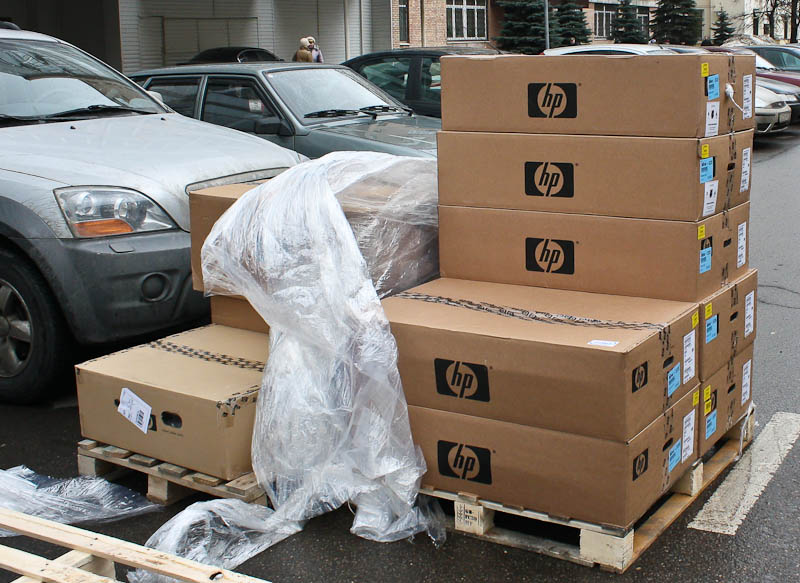
After the boxes are unloaded from the car, they are moved to the data center. If there are not many boxes, you can place them directly in the entrance area.
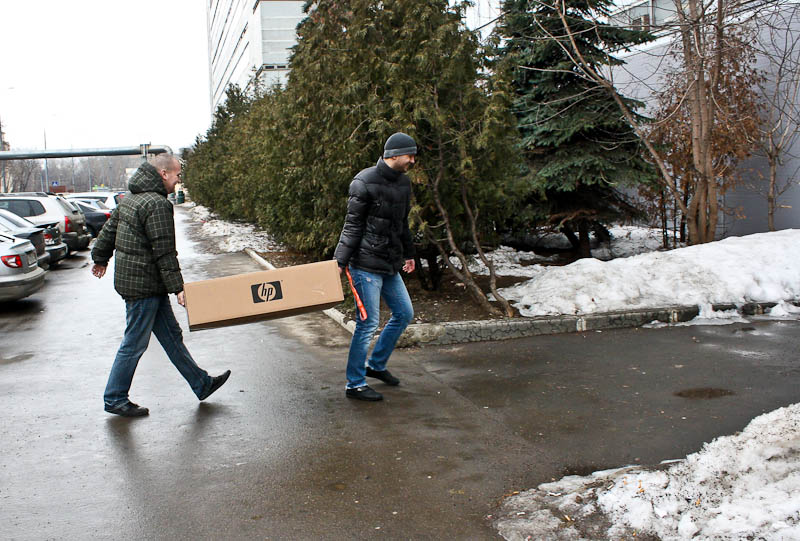
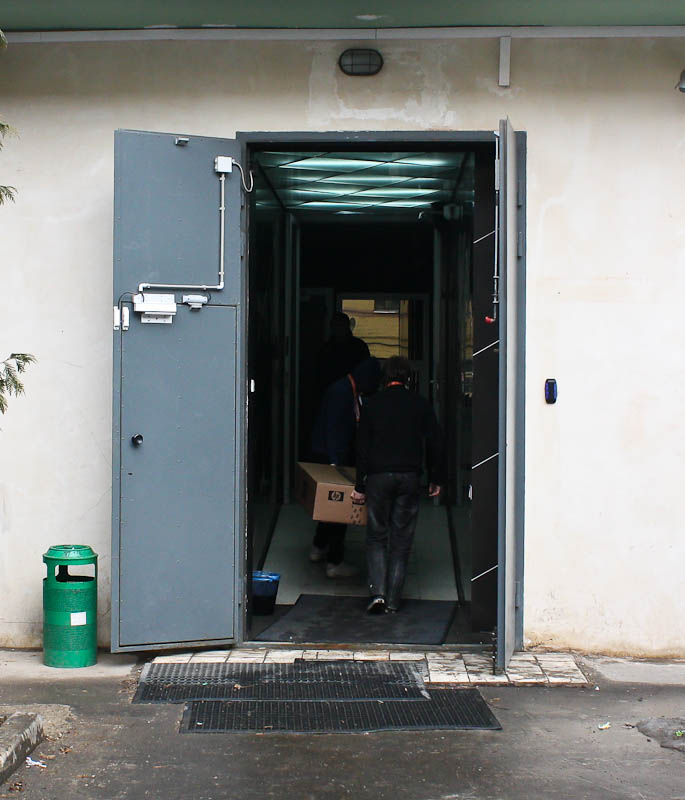
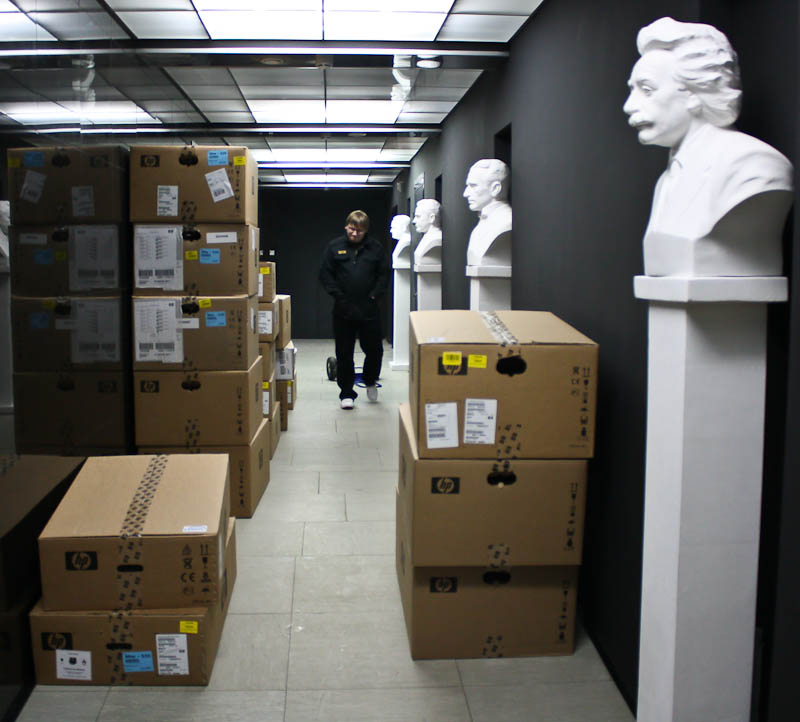
Then the equipment is unpacked, “put” into the base, glued with stickers and seals. These goals are served by a special Toshiba printer for printing stickers and the Brady portable machine - we will tell about them in more detail in a separate post about inventory.

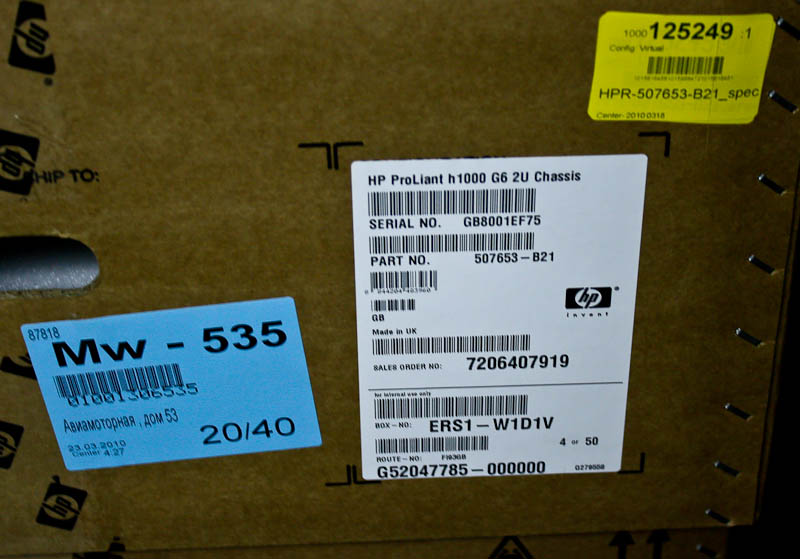
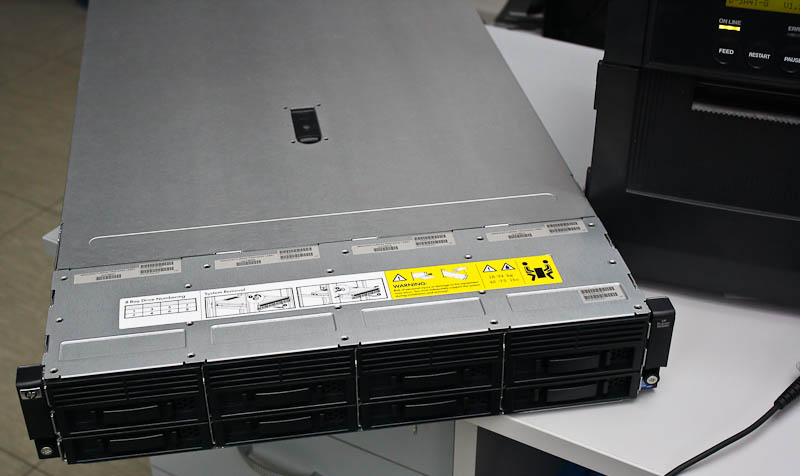
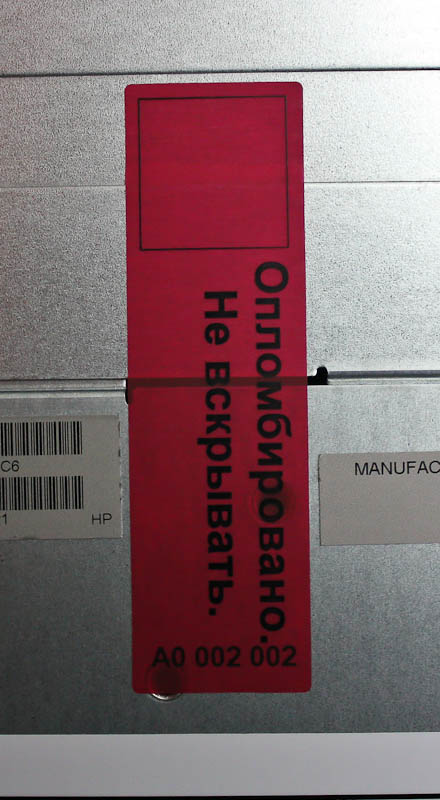
Ready servers are moving to the containment area. The floor in the containment area is clean and durable, so customer engineers are not shy about putting equipment directly on it. For those who think this is not safe enough, we provide a trolley.
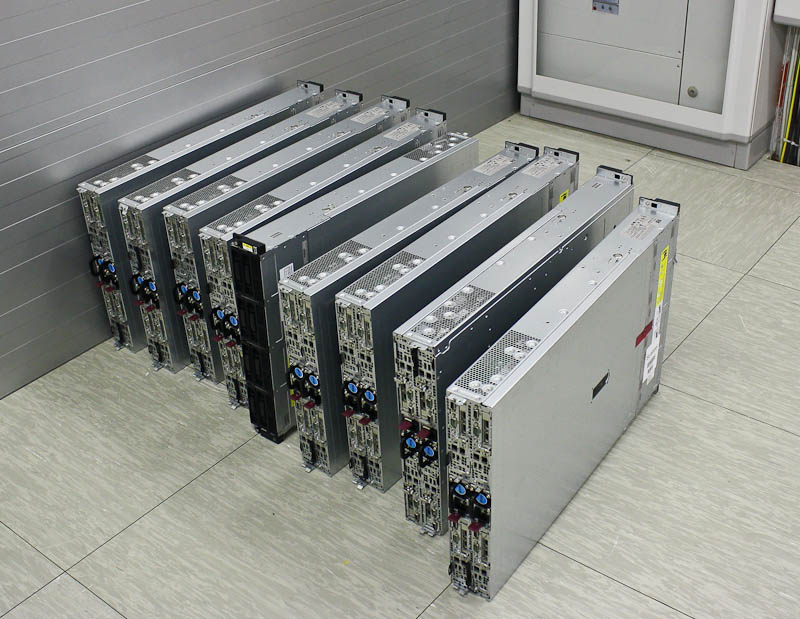

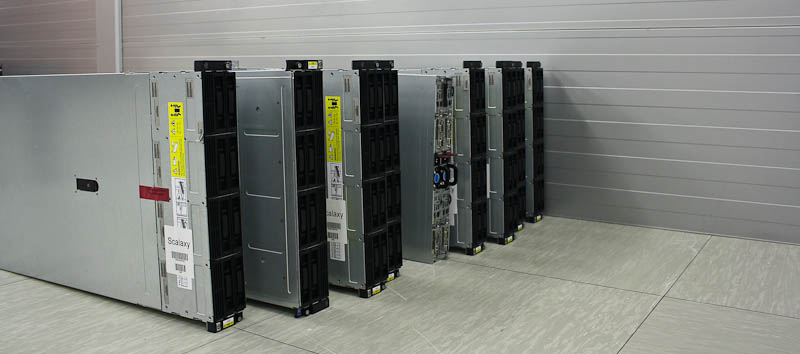
After this stage, rack mounting begins. We did not take pictures of engineers, so you yourself have to imagine the harsh and strong bearded guys with glasses, sweaters, real kings of iron and keyboard jockeys. This, of course, is a joke. Our engineers are modern young people, each with their own interests, very unbanal.
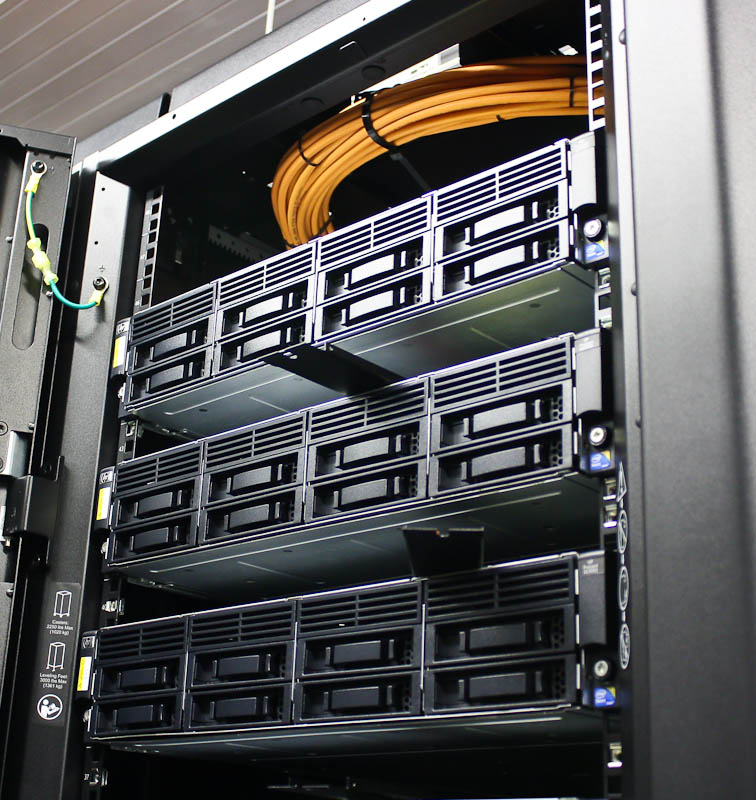
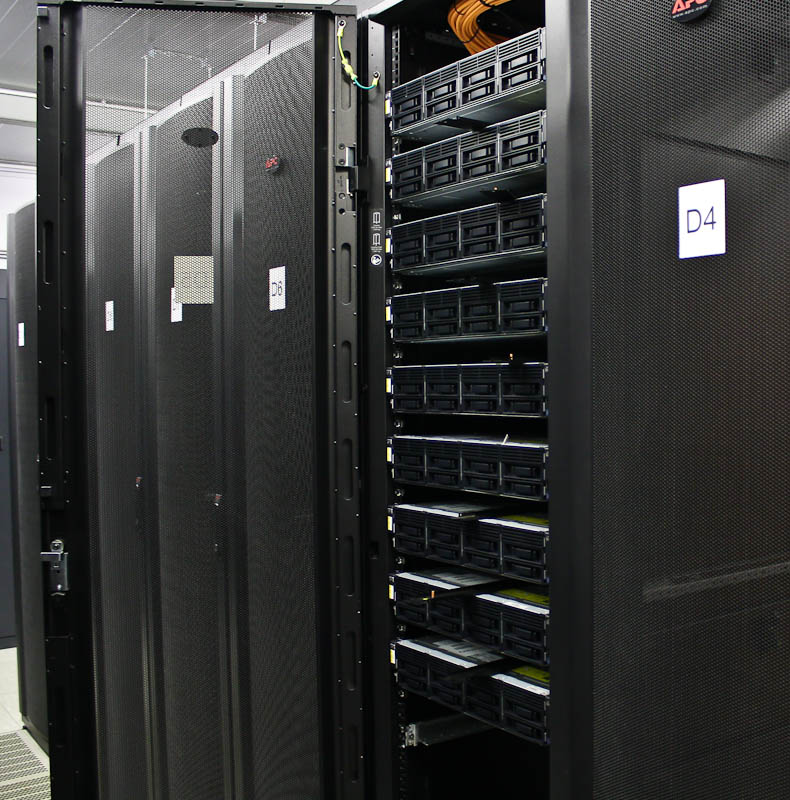
When installing any equipment in a rack, be sure to go broke on the false panels (blanking plates). At open intervals, cold air evaporates in huge quantities - often you can solve the problems with cooling just by installing panels, so saving them is the last thing. In the photo, the panels are not yet installed, but visible between the servers and storage systems.
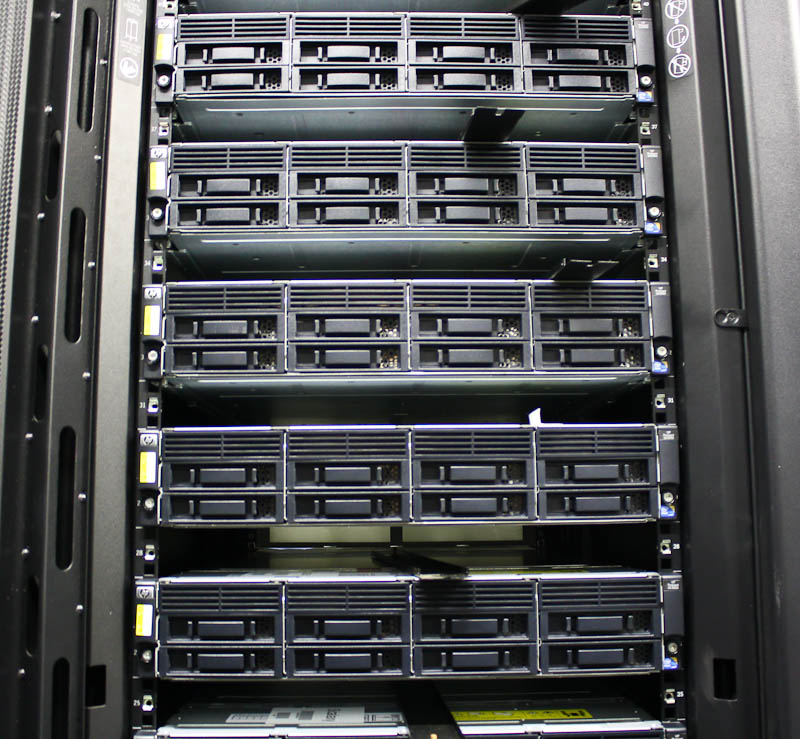
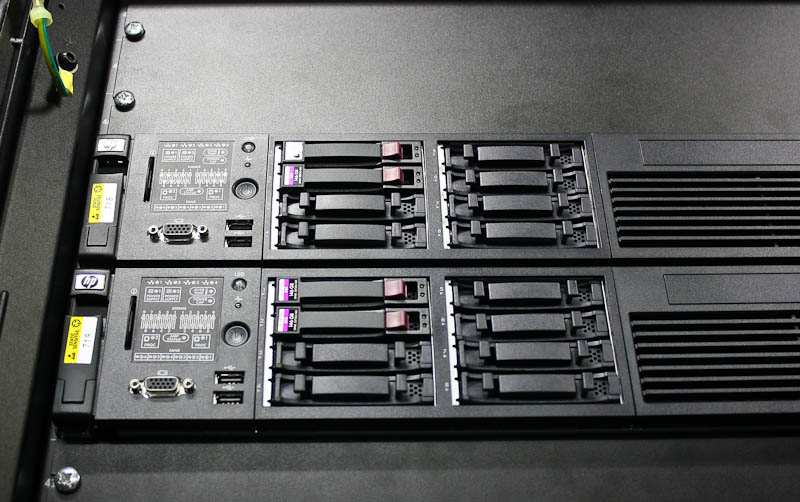

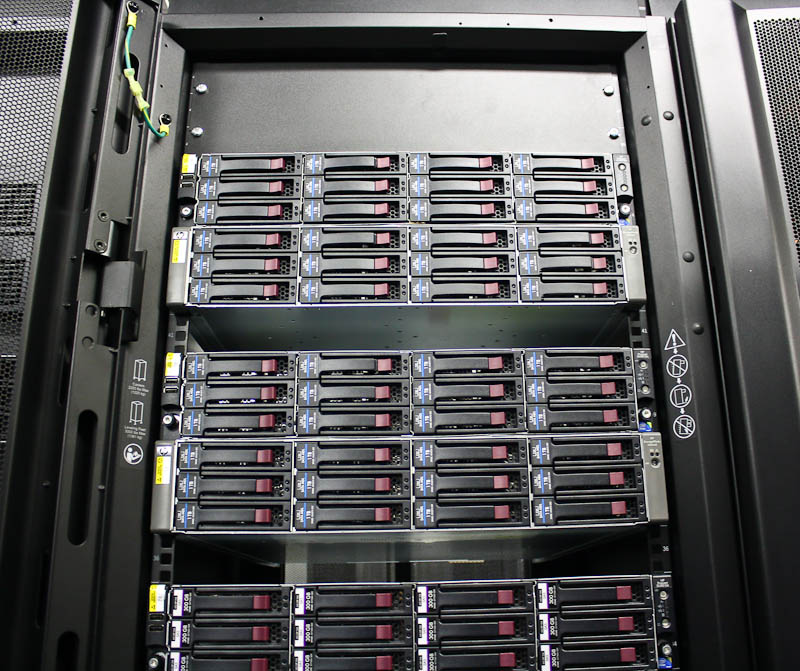
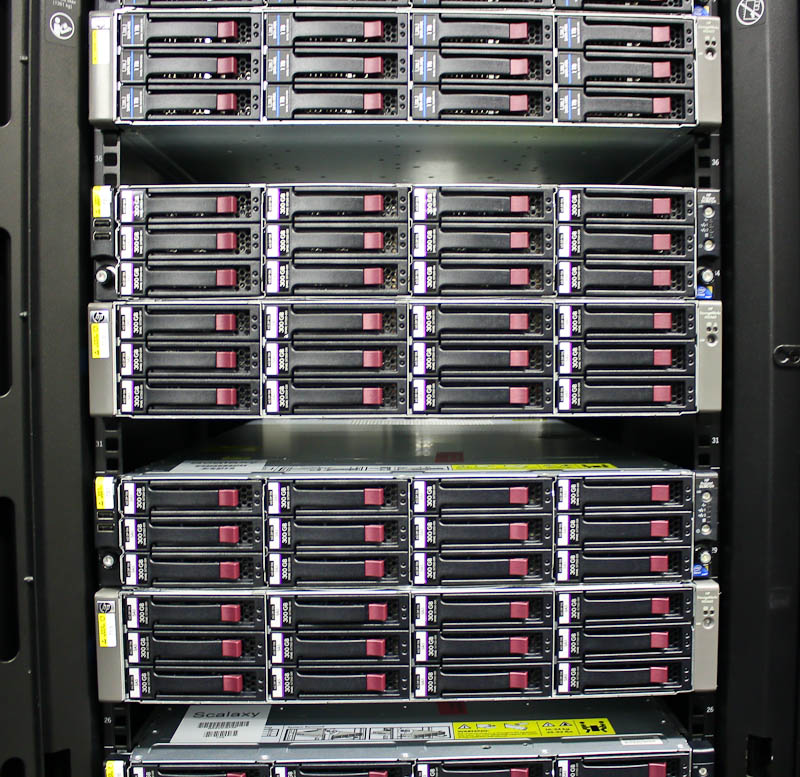

So everything looks neat and pretty in the end.
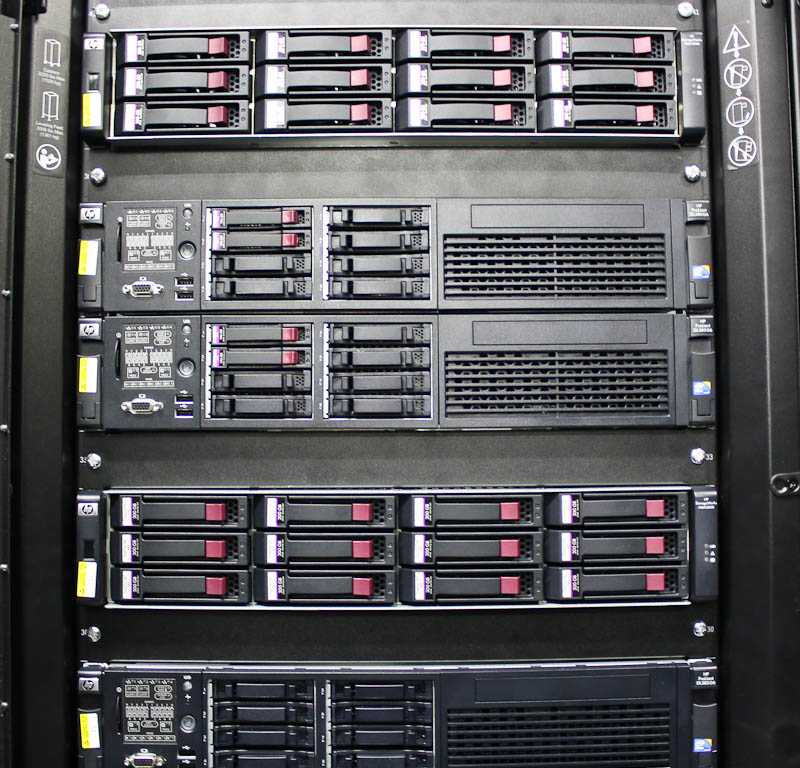
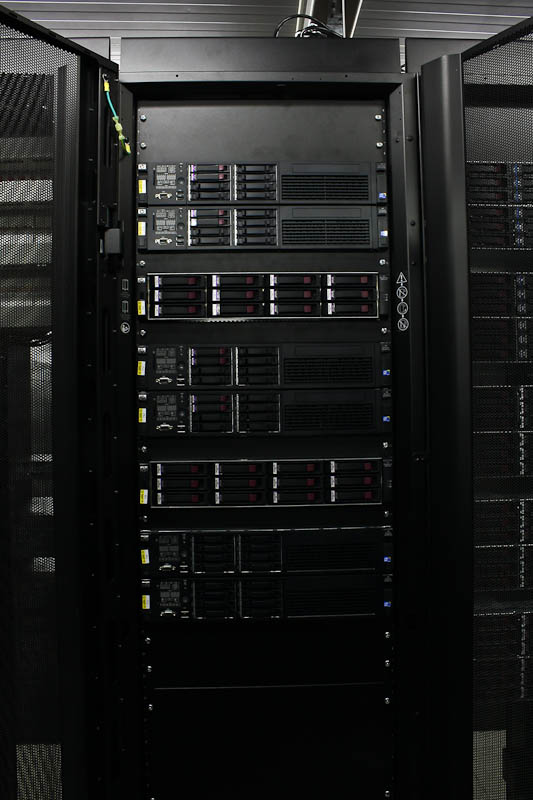
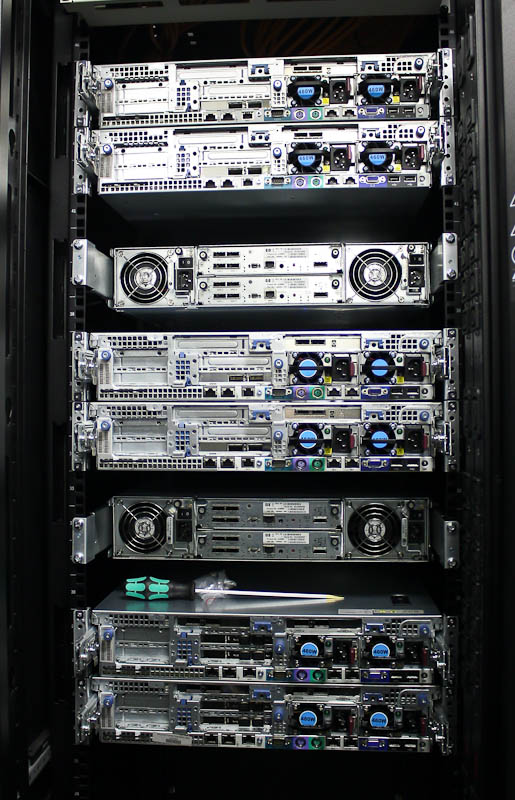
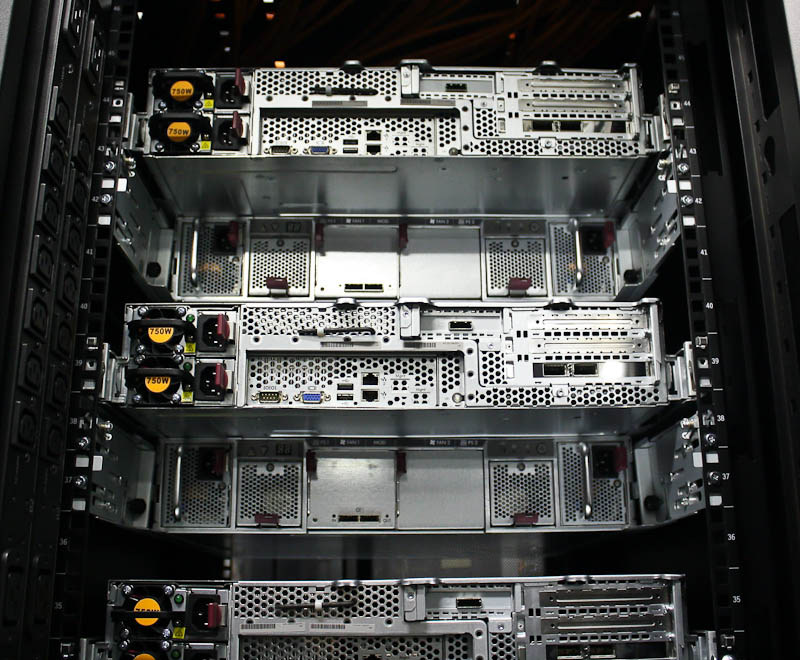
The final stage is connecting and configuring. We will write about it soon too!

Let's start, as usual, with a hanger, or rather, with how the equipment is brought. This mainly depends on how much equipment is arriving at a given moment. A couple of servers can easily be brought by ordinary passenger car, but if there are more of them, you will have to carefully consider the procedure. The author of the post once had the opportunity to participate in the acceptance, unloading, packaging and installation of three hundred (!) Servers, and he experienced the importance of the proper organization of the process.
Equipment, if there is a lot of it, is best brought at night. In this way, several birds with one stone are killed at once: nothing prevents the truck (or an ordinary car) from maneuvering, since the parking lot is empty at night, passers-by do not get underfoot, and onlookers do not pay any attention to the process simply because they are not nearby. The main thing is not to disturb the sleep of citizens resting after a hard day. We succeed, the benefit is the nearest residential buildings are at some distance. However, most often the equipment is imported in the afternoon - it’s more convenient for customers. In this case, of course, some roughness arises. For example, a lot of cars are parked near the data center and the driver has to maneuver intensively. Equipment pallets also sometimes have to be unloaded directly onto the carriageway. This is not very good, but at least we

After the boxes are unloaded from the car, they are moved to the data center. If there are not many boxes, you can place them directly in the entrance area.



Then the equipment is unpacked, “put” into the base, glued with stickers and seals. These goals are served by a special Toshiba printer for printing stickers and the Brady portable machine - we will tell about them in more detail in a separate post about inventory.




Ready servers are moving to the containment area. The floor in the containment area is clean and durable, so customer engineers are not shy about putting equipment directly on it. For those who think this is not safe enough, we provide a trolley.



After this stage, rack mounting begins. We did not take pictures of engineers, so you yourself have to imagine the harsh and strong bearded guys with glasses, sweaters, real kings of iron and keyboard jockeys. This, of course, is a joke. Our engineers are modern young people, each with their own interests, very unbanal.


When installing any equipment in a rack, be sure to go broke on the false panels (blanking plates). At open intervals, cold air evaporates in huge quantities - often you can solve the problems with cooling just by installing panels, so saving them is the last thing. In the photo, the panels are not yet installed, but visible between the servers and storage systems.






So everything looks neat and pretty in the end.




The final stage is connecting and configuring. We will write about it soon too!
